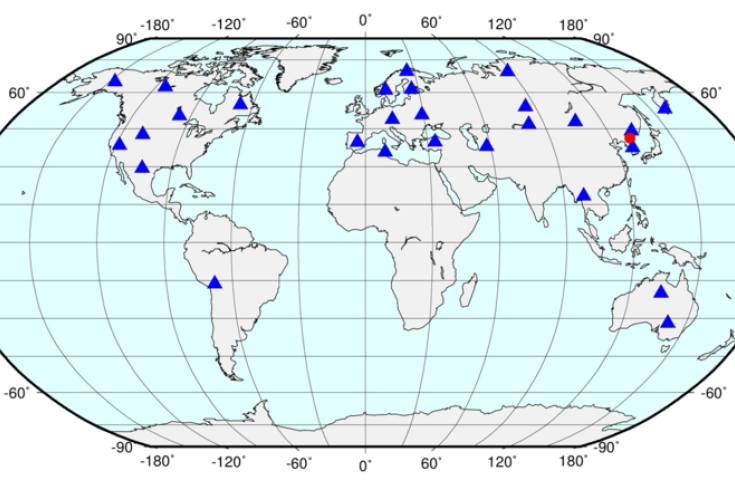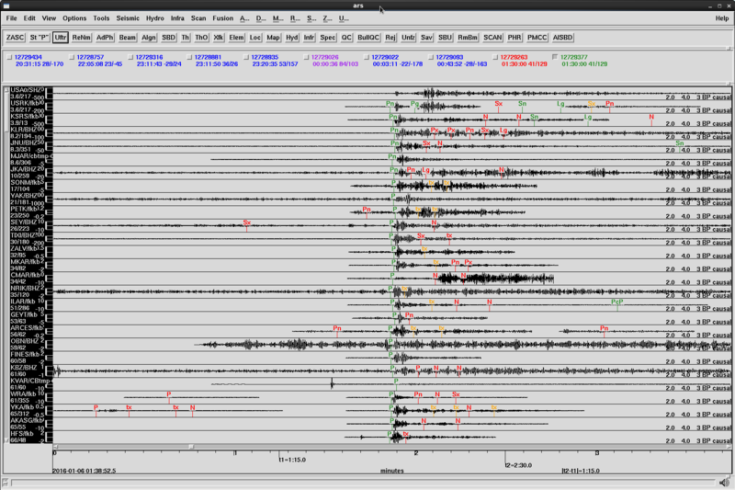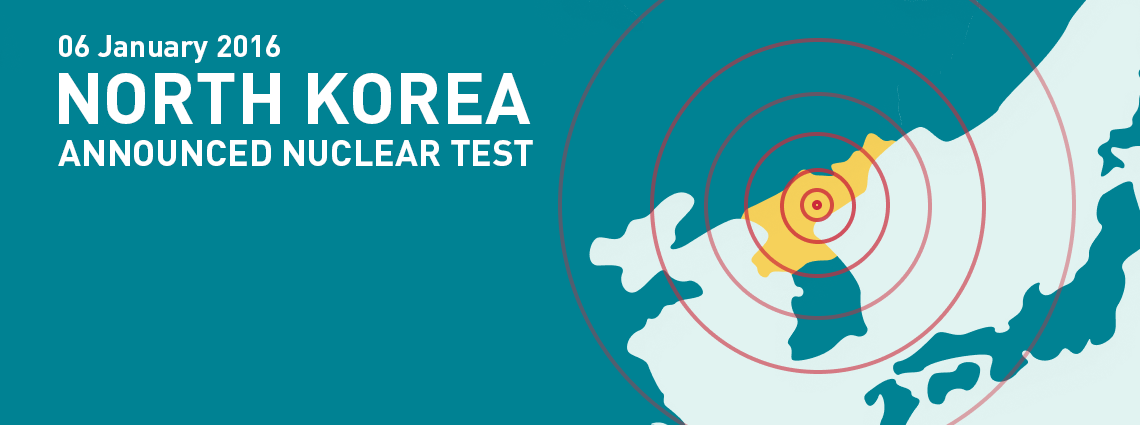2016 DPRK Announced Nuclear Test
The DPRK Announced Nuclear Test, January 2016
At 01:30:00 (UTC) on 06 January 2016 the CTBTO's monitoring stations picked up an unusual seismic event in the Democratic People’s Republic of Korea (DPRK). The location and magnitude is similar to the event our system registered on 12 February 2013. Our initial location estimate shows that the event took place in the area of the DPRK’s nuclear test site. The following analysis confirmed that the event was a man-made explosion. The DPRK also claimed on 6 January that it has conducted yet another nuclear test, the fourth since 2006.
7 January 2016 - Update on the seismic event detected in North Korea with ES Lassina Zerbo.
6 January 2016 - Press Stakeout with Randy Bell, CTBTO's Director of the International Data Centre.
Special meeting of CTBTO Member States
Technical Findings
The initial automatic detection of the event was made on 6 January 2016 at 01:36 UTC by 27 primary seismic stations, the closest being primary seismic (PS) station PS31, Wonju, Korea and PS37, Ussuriysk, Russia. One of the furthest was PS06, La Paz, Bolivia.
The initial estimate of the event's magnitude was 4.9, which was revised to 4.85 in the course of further analysis.

We can say now that the event of 6 January 1:30 UTC is indeed a man-made explosion.
In the process, data from additional seismic stations including auxiliary seismic stations is being used. The International Monitoring System (IMS) consists of 50 primary and 120 auxiliary seismic stations, of which 42 and 107 respectively are certified, see interactive map.
The preliminary analysis showed that the event occurred in the vicinity of the nuclear test site of the Democratic People's Republic of Korea (DPRK). The characteristics of the waveforms were similar to the event detected on 12 February 2013, when the DPRK last declared to have conducted a nuclear test. That event was detected by a total of 94 seismic and 2 infrasound stations.

The International Monitoring System did exactly what it was supposed to do this morning.

Result of seismic analysis: a man-made explosion
In the course of 7 January, the Revised Event Bulletin (REB) was issued, which is the result of human analysis. The REB clearly identified the event as a man-made explosion. This explosion can only be classified as nuclear once corresponding airborne radioactivity is detected.
The Reviewed Event Bulletin used data from 77 seismic station to study the event, of which 74 were used so far for the location. The error ellipse has shrunken to +/- 9.1 km or 214 km2, so well within Treaty requirements for an on-site inspection.
Potential for Radionuclide Detections
Should traces of radioactivity have been released from the event, typically in the form of the radioactive noble gas xenon, they would need to be transported through the atmosphere to one of the radionuclide stations in the region, detected, sampled and analyzed. Results, if any, can be expected within days or weeks. After the 2013 announced nuclear test, xenon was detected around 55 days after the event.
Under the Comprehensive Nuclear-Test-Ban Treaty (CTBT), the determination of an event's nature - nuclear explosion or not - lies with the Member States and their National Data Centres.
The atmospheric transport simulation below is based on the hypothesis that a release of radionuclides occurred immediately and continuously from the location of the seismic detection.

Update 11 March 2016
Press Centre
09 September 2016
PRESS RELEASE: CTBTO Executive Secretary Lassina Zerbo on the unusual seismic event detected in the DPRK
07 January 2016
PRESS RELEASE: Statement by the Chairperson of the Preparatory Commission, Amb. Cristian Istrate
06 January 2016
PRESS RELEASE: CTBTO Executive Secretary Lassina Zerbo on the unusual seismic event detected in the DPRK / French version

